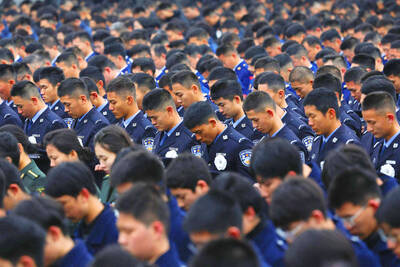Aid groups and government officials are concerned that orphans are being split among relatives more eager to obtain money promised for tsunami survivors than to care for the children.
Jayashree, just 3 years old, like thousands of other children across Asia, lost her parents in the tsunami.
Now she has been separated from her siblings by a grandmother who picked her up from a relief camp in Nagapattinam, the worst-hit district on the Indian mainland with 5,500 deaths.
Dressed in a crumpled pink dress that she found among a pile of used clothes from nearby Akkrapattai fishing hamlet, Jayashree pines continually for her sister Nithya, 6, and brother Gunasekaran, 10.
Her maternal grandmother appears patient when visitors are around but snarls at the child when she thinks no-one is watching.
The paternal grandmother picked up Nithya and Guna.
Both grandmothers stand to collect 100,000 rupees (US$2,272 dollars) promised by the state and another 100,000 rupees pledged by the federal government as the nearest relatives.
The government money is, however, intended to go into fixed deposits for an orphaned child to access when he or she reaches the age of 18.
Jayashree said sadly that her parents have gone "kizhakku poyirukkaanga" -- gone east, which in her village of some 5,000 fishing families means going to the beach to trade fish.
Jayashree's story is repeated almost in every relief center across the Tamil Nadu shoreline.
One UNICEF official said a man, who turned up claiming to be an uncle of an orphaned boy turned out to be a fraud after the child refused to go with him.
"Obviously, these orphans are precious to their relatives and even others not related, for the money relief offered by the government," said S. Vidyaakar, founder-director of Madras-based `Udhavum Karangal' (Helping Hands), a volunteer institution,
The organization, which cares for destitute children, old people and the terminally ill, placed an advertisement in the newspapers offering to take tsunami orphans into care. It received not a single response.
Vidyaakar, however, fears his time will come sooner than later, when the relatives grab the relief money and then dump the orphans on the road.
"Then we will step in and take care of those unfortunate ones," he said.
Started in 1982, Udhavum Karangal provides care for about 2,000 people, almost 500 of them children.

PARLIAMENT CHAOS: Police forcibly removed Brazilian Deputy Glauber Braga after he called the legislation part of a ‘coup offensive’ and occupied the speaker’s chair Brazil’s lower house of Congress early yesterday approved a bill that could slash former Brazilian president Jair Bolsonaro’s prison sentence for plotting a coup, after efforts by a lawmaker to disrupt the proceedings sparked chaos in parliament. Bolsonaro has been serving a 27-year term since last month after his conviction for a scheme to stop Brazilian President Luiz Inacio Lula da Silva from taking office after the 2022 election. Lawmakers had been discussing a bill that would significantly reduce sentences for several crimes, including attempting a coup d’etat — opening up the prospect that Bolsonaro, 70, could have his sentence cut to

China yesterday held a low-key memorial ceremony for the 1937 Nanjing Massacre, with Chinese President Xi Jinping (習近平) not attending, despite a diplomatic crisis between Beijing and Tokyo over Taiwan. Beijing has raged at Tokyo since Japanese Prime Minister Sanae Takaichi last month said that a hypothetical Chinese attack on Taiwan could trigger a military response from Japan. China and Japan have long sparred over their painful history. China consistently reminds its people of the 1937 Nanjing Massacre, in which it says Japanese troops killed 300,000 people in what was then its capital. A post-World War II Allied tribunal put the death toll

A passerby could hear the cacophony from miles away in the Argentine capital, the unmistakable sound of 2,397 dogs barking — and breaking the unofficial world record for the largest-ever gathering of golden retrievers. Excitement pulsed through Bosques de Palermo, a sprawling park in Buenos Aires, as golden retriever-owners from all over Argentina transformed the park’s grassy expanse into a sea of bright yellow fur. Dog owners of all ages, their clothes covered in dog hair and stained with slobber, plopped down on picnic blankets with their beloved goldens to take in the surreal sight of so many other, exceptionally similar-looking ones.

‘UNWAVERING ALLIANCE’: The US Department of State said that China’s actions during military drills with Russia were not conducive to regional peace and stability The US on Tuesday criticized China over alleged radar deployments against Japanese military aircraft during a training exercise last week, while Tokyo and Seoul yesterday scrambled jets after Chinese and Russian military aircraft conducted joint patrols near the two countries. The incidents came after Japanese Prime Minister Sanae Takaichi triggered a dispute with Beijing last month with her remarks on how Tokyo might react to a hypothetical Chinese attack on Taiwan. “China’s actions are not conducive to regional peace and stability,” a US Department of State spokesperson said late on Tuesday, referring to the radar incident. “The US-Japan alliance is stronger and more